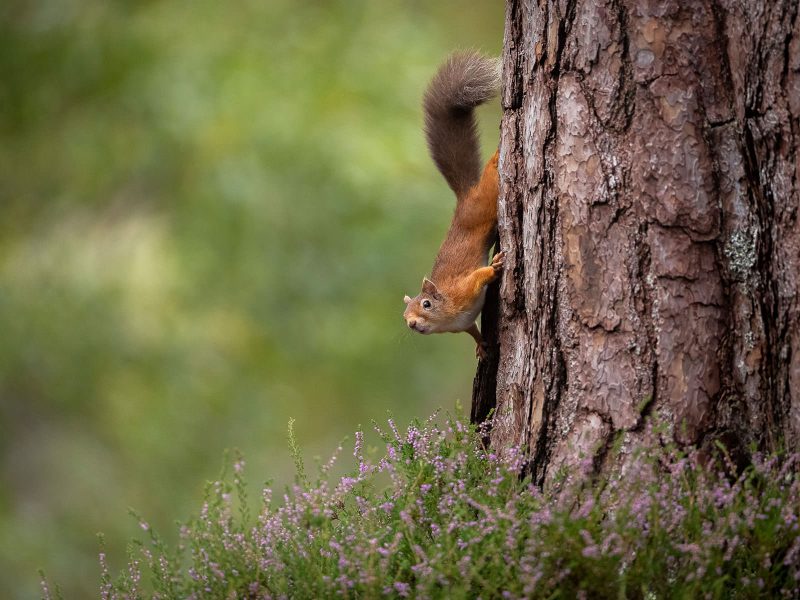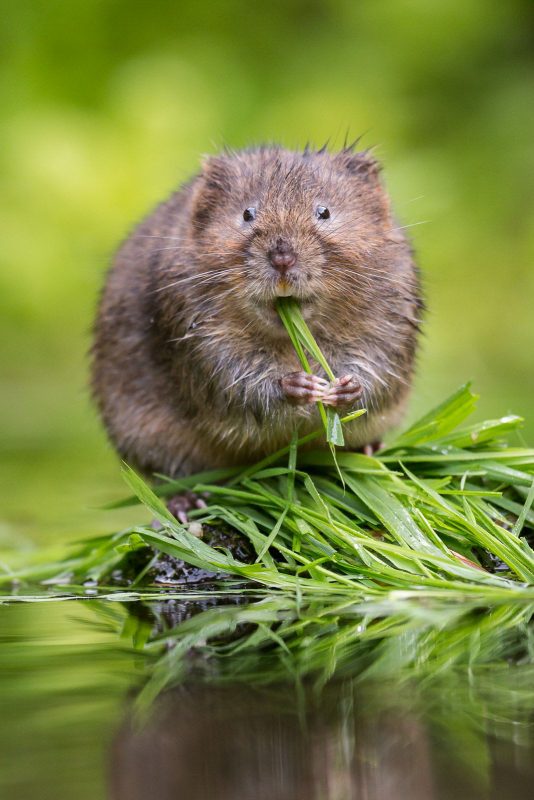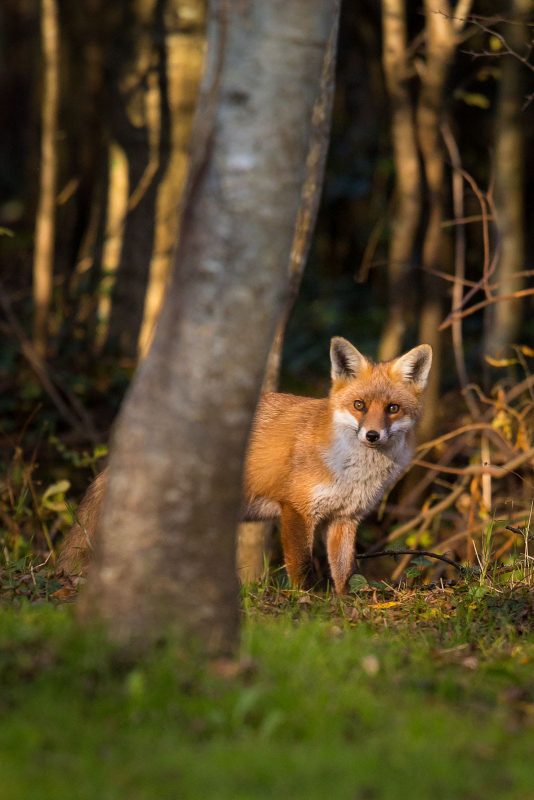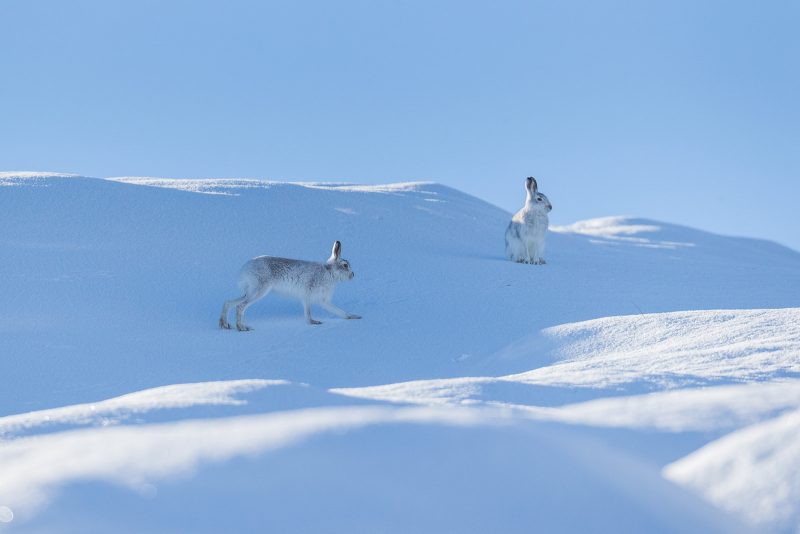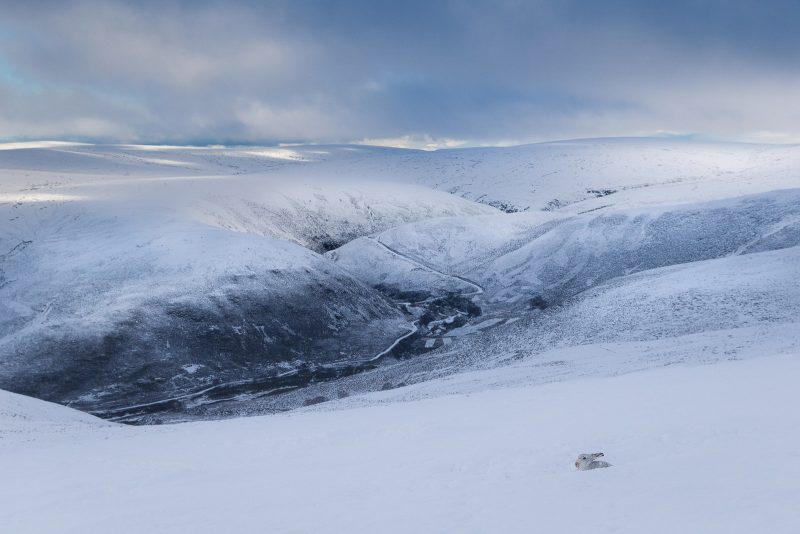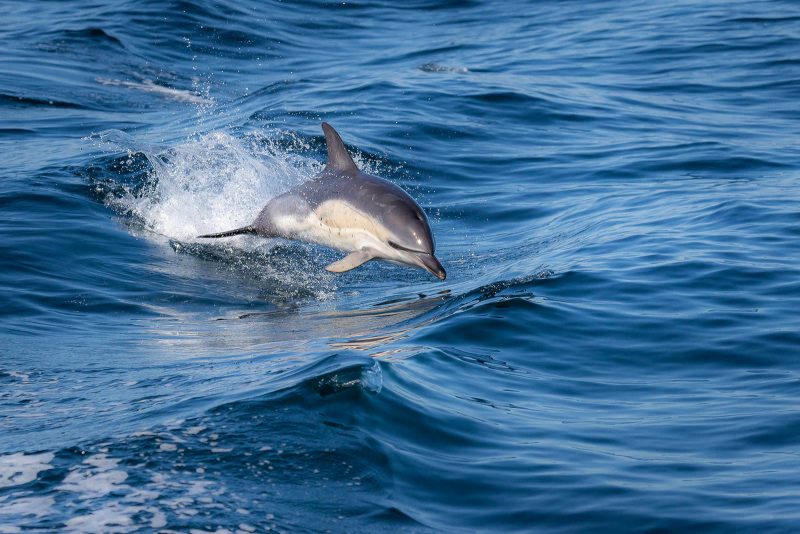How to Find and Photograph British Mammals
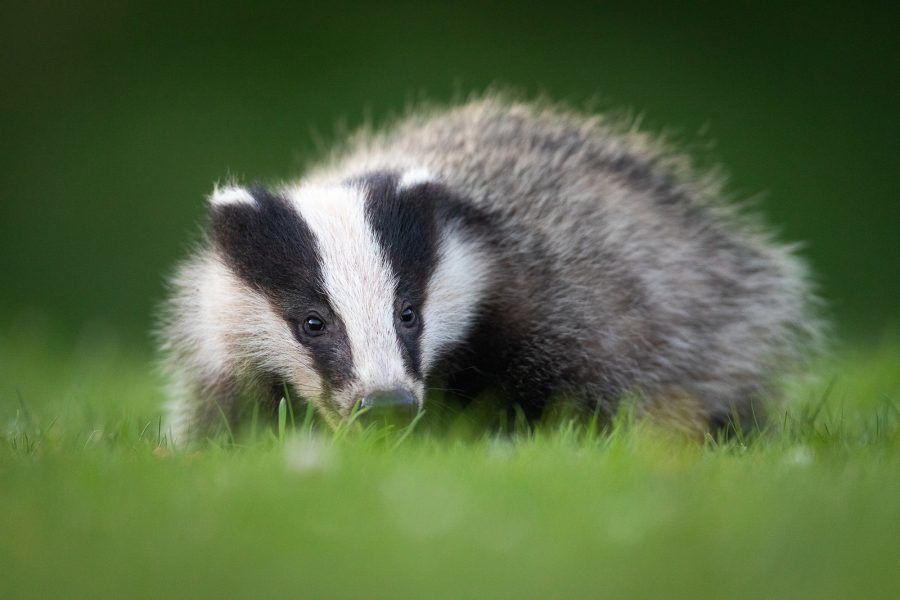
In Britain, we are incredibly lucky to have such a diverse array of mammals. In the wild beaches and coastal waters, inland rivers and farmland, lush woodlands and snowy mountain tops, you can find mammals inhabiting all of these ecosystems.
There is a total of 107 mammals found in and around the British Isles, including 30 species of cetaceans and 18 types of bat. Documenting our the entire list of mammals would be a huge task as a photographer, and I imagine even a lifetime’s worth of photography would only scratch the surface.


In this article, I will focus on some of my favourite species that I have had the pleasure of encountering over the years. I’ll share some information about each animal, and where you can hope to find them.
Find wildlife photography workshops in the UK with the Nature TTL Hub
Remember your fieldcraft
It is important when photographing any wild animal to keep your distance, be quiet and discreet. Read up on fieldcraft techniques – such as using natural gullies and cover to approach wildlife. Invest in a pop-up hide and good camouflage clothing; whilst they’re not always necessary, they are made of quiet, rustle-free materials and will get you into the right mindset of respecting the wildlife.
Always keep in mind the much quoted phrase, “take nothing but photographs, leave nothing but footprints, kill nothing but time.”
Read more: The Ethics of Wildlife Photography
Recommended techniques for British wildlife photos
For frame-filing portraits, you want subject isolation. This is where depth of field comes into play. Use a wide aperture on a long lens to ensure the foreground and background are blurred, and drop to your subject’s eye level. Obscuring the subject slightly with naturally occurring foreground or plants will help to create depth.
For static subjects, use a single focus point rather than a larger array of AF points. This means you can pinpoint what you want to be in focus, rather than leaving it to “chance.” With animal portraits, the focus point should be positioned on the eye. For moving subjects, if possible, try to choose an AF zone or region that matches the size of your subject; that way you should not get any poorly focused images.
It is easy to get hung up on reaching for the longest lens possible and shooting tight portraits. Whilst this is a great option most of the time, it never really conveys the animal’s habitat. Sometimes, the landscape around it can be just as interesting as the subject – so remember to pack a wide-angle lens in your camera bag too.
Never impede any wildlife’s movement for a photo. Once you are happy with your images, leave the animal in peace; carefully retrace your steps and ensure that you cause no stress to the animal by your presence.
Where to find and photograph British mammals
1. Badger (Meles meles)
Habitat: Broadleaved woodland, farmland, towns and gardens.
Diet: Worms, invertebrates, small mammals, fruit.
Predators: Adults have no predators. Cubs are sometimes taken by foxes and large birds of prey.
Probably my favourite out of all the British mammals, badgers are superb subjects to photograph. The striped face, coarse grey fur, and a short furry tail make the badger an unmistakeable sight among British woodland.
Adults can grow quite large – a good three feet long and over 10kg. Living in large family groups called clans, badgers create a myriad of underground tunnels and chambers called setts. They are also creatures of habit and will use the same well-trodden paths through grassland. This can be a great telltale sign for finding them.
Badgers are omnivores, which means they will eat a wide range of food. Most of a badger’s diet is made up of earthworms; they eat hundreds of them every night, but they also eat slugs, other invertebrates, and fruit. When earthworms are scarce, badgers will even eat small mammals – they are the main predator of hedgehogs in the UK, for example. Badgers locate food using their keen sense of smell and sharp claws that are ideal for digging.
They are found right across the UK, with the highest populations in southern England & Wales. Ideal badger habitat is a mixture of woodland and open country where they can forage for, predominately, earthworms.
One of the best ways to spot a badger is to locate a sett and quietly wait for them to emerge. Look for woodland that fringes farmland or grassland; here you will most likely find a sett on the areas of land where these two meet – especially if it is on a sloping site as badgers find it easier to dig horizontally rather than straight down.
While a badger’s eyesight is not the best, their sense of smell is. So, make sure to position yourself downwind, or across-wind, when setting up to photograph them.
As badgers are mainly nocturnal, the only opportunities to capture naturally lit images are during the spring and summer months, when it is not uncommon to find adults and cubs foraging in the day or just before sunset. Set up a safe distance away around an hour before dusk and wait patiently, making sure your outline is not obvious against the sky.
Read more: How to Find and Photograph Badgers
2. Red Deer (Cervus elaphus)
Habitat: Woodland, upland, private parks.
Diet: Grass, sedges, rushes, tree shoots and shrubs.
Predators: Adults no longer have natural predators, although foxes and golden eagles may take young.
Red deer are incredibly majestic and often referred to as “the monarch of the glen”. Not only are they our largest native land mammal, they are also the royalty of our mountains and woodland.
They are best known for their impressive sets of antlers, reaching up to 16 points (the number of protrusions) in some cases. Come autumn time, the woods and hills echo with the bellowing roars of rutting stags and the sounds of clashing antlers.
Most red deer in the UK are found across all of Scotland. One of my favoured places to find them is in and around the Cairngorms and Royal Deeside, as well as the western regions of Glencoe and up towards the islands of Skye. They are no way limited to just these locations; elsewhere there are many scattered populations – basically wherever you see deer fencing, you will find them.
For England and Wales, the Lake District holds most numbers along with East Anglia and the southwest. There are also the deer parks throughout the country, in London and south Wales, which hold many numbers. A small pure breed herd also resides on the Welsh island of Ramsey.
Red deer are easiest to spot in open spaces and, for most people, the best way to see them is in the deer parks. Park deer are generally semi-wild and therefore fairly used to humans, allowing for better views than their fully wild counterparts. Even so, venture out into the countryside and wilds of Scotland for much more rewarding images in terms of habitat and surrounding landscape views.
3. Red Squirrel (Sciurus vulgaris)
Habitat: Coniferous, mixed and broadleaved woodland.
Diet: Nuts, seeds, tree shoots, and other plant matter.
Predators: Pine marten, birds of prey, foxes, and stoats.
Another classic British species is the characterful red squirrel. These bouncing, bushy-tailed bundles of energy are now confined to the majority of Scotland and some smaller pockets throughout England & Wales.
Red squirrels used to be abundant across the British Isles, but populations have declined since to the introduction of grey squirrels. Greys not only outcompete them for food, but also carry the Squirrelpox Virus that is fatal to reds that contract it.
Red squirrels are also massively dependent on native woodland to survive. It is said that a red squirrel could, in the past, travel across the width of Scotland in the treetops without ever touching the ground. That is no longer the case, of course.
These days with land “management”, forest destruction and habitat loss, there are only small pockets of Caledonian woodland left for them to survive. Thankfully, red squirrels are being reintroduced to more and more suitable places throughout Britain, including many in Wales where numbers are now thriving
The best time of year to see red squirrels is undoubtedly autumn. This is when their ear tufts start to grow longer and they get bushier tails. You will also see them busily scurrying around searching for food to last them through the winter.
The forests in Galloway, Arygll, Tayside, and the Caledonian pine forests of the Highlands are all Scottish strongholds for red squirrels. In England, Cumbria, Northumberland, and north Yorkshire hold good numbers, as do smaller pockets in and around Merseyside. There are also populations on islands off the south coast of England – Anglesey and Caldey – and in mid-Wales too.
4. European Water Vole (Arvicola amphibious)
Habitat: Rivers and wetland, mixed woodland.
Diet: Grasses and waterside vegetation, including some fruit and berries.
Predators: Mink, weasels, stoats, and herons.
Characterised as the River Ratty in the classic story The Wind in the Willows, water voles are superb little mammals to spend time with. Although water vole populations are now on the up, at one point they were the fastest declining species in Britain.
It’s said that the population was reduced by 90% in the late 90s, mainly because of escaped mink that predated on water voles heavily. However, there are still hotspots where the habitat is perfect for them.
They prefer lowland areas and are not often seen in Scotland, and are also absent from the island of Ireland. Scour through many of the wetland reserves around the country, and you will find information as to whether water voles are common on that site.
Unlike the name suggests, water voles do not live in water and spend most of their time within a few feet of their burrows – this creates some protection from any predators. Slow-flowing, deep water such as canals, lakes and streams suit the vole’s habits, who do not have webbed feet like most water-dwelling animals.
Look for small holes in banks where a vole can ‘plop’ discretely into the water when foraging for food. They construct their burrows on several levels to minimise the risk of flooding, with at least one entrance below water for a safe, unnoticed escape.
To photograph water voles, it will take a fair amount of scouting out of potential sites. The main thing to look out for are small grazed areas, covered with neat piles of small grass cuttings, which will often be seen around burrow entrances.
5. Red Fox (Vulpes vulpes)
Habitat: Woodland, farmland, upland, and urban areas.
Diet: Rabbits, rodents, small birds, invertebrates, fruit, and berries.
Predators: Adults have no natural predators.
Equally at home in our woods as they are in city streets, the red fox is a master at adapting to its environment and making the best out of any area. Known more as a classic British woodland species, foxes are increasing in population in city areas due to the abundance of food, not to mention many nooks and crannies in and around our urban gardens that make for cosy dens.
Foxes are opportunistic omnivores, and this allows them to survive in a huge array of habitats. Rabbits and voles are common prey in more rural areas, while their diet can include everything from worms to food waste and fruit.
Read more: How to Photograph Foxes
Like badgers, they create safe areas underground called dens. They mate in winter and are having their cubs in springtime. They usually have four to five cubs, with both parents caring for them until they are old enough to fend for themselves – at around six months old and during the autumn.
Some cubs will stay with the adults, creating a small family group, while others will leave to create territories of their own. Foxes inhabit pretty much everywhere in Britain and are present in most of our woodlands. However, rural foxes are generally very wary of humans and, with their incredible sight and sense of smell, you are more likely to have success seeing one in a town or city.
Urban foxes can become very blasé around humans in urban environments, and it is not uncommon to have close encounters with them, allowing for exceptionally good views.
Foxes are crepuscular, meaning they are most active around dawn and dusk, but it is not unusual to see them during the day, especially in urban areas.
To find them, the best thing to start with is looking for signs of their presence. Fox poo, known as scat, is often deposited on footpaths and prominent spots, and its usually your own nose that becomes aware at first, as they do have a unique smell. Also, if you’re searching in an urban environment, look out for where food or rubbish waste is regularly placed – this could be a draw for them.
6. Mountain Hare (Lepus timidus)
Habitat: Upland and moorland.
Diet: Heather, grasses, rush and sedge species.
Predators: Foxes, stoats, cats, and large birds of prey.
An iconic species of upland environments, the mountain hare is one of Britain’s finest and one of only a handful of animals that change from brown to white fur in winter.
Unlike the other lagomorphs (the rabbit and the brown hare), which are thought to have been introduced by the Celts, the mountain hare is native to Britain. At first found mostly in Scotland, they were then introduced to other areas of Britain, including the southern uplands, Peak District, and Snowdonia.
You will find mountain hare predominately around the highlands of Scotland. The Cairngorms, Monadhliath, some Scottish islands and other boreal areas at around 500 metres or more of altitude. They have since died off in Wales, but in Ireland there is a genetically very distinct relative – the Irish hare.
Undoubtedly the first thing to look for with hares are tracks, especially in winter when it is obvious in the snow. Mountain hares spend a lot of their time resting in “forms” – small scrapes dug into the hillside to keep themselves out of the worst of the weather.
In winter, they will sleep a lot in these forms, conserving energy and waking every forty minutes or so to feed and preen. Rather than taking hundreds of photos of sleeping hares, it’s best to wait for this small window of activity when they wake up – then it’s possible to capture some more compelling images.
Occasionally, you may have the odd hare running across the hillside and, if you are sitting still enough, they may pass close enough for a decent view.
Through the rest of the year, when snow isn’t on the ground and the hares are back to their usual brown pelage, they are definitely more active, foraging on the hillsides and feeding on heather and grasses. In such cases, they are slightly harder to work with in terms of cooperating individuals. However, it’s always good to visit in different seasons to capture a mixture of images.
Find wildlife photography workshops in Scotland with the Nature TTL Hub
7. Common Dolphin (Delphinus delphis)
Habitat: Tropical and temperate waters of Pacific and Atlantic Oceans.
Diet: Mackerel, herring, other schooling fish, cephalopods.
Predators: Some sharks and orcas will prey upon dolphins. Dolphins are also often trapped in fishing nets.
No British mammal “best of” list would be right without a celebration of our aquatic and coastline mammals, and a great example of this is the common dolphin. The short-beaked common dolphin, to give them their proper title, can be found all around the coasts of Britain, though they are most often seen off the south and west coasts, such as Cornwall and west Wales.
They grow up to nearly three metres long, 150kg in weight, and have a lifespan of over thirty years. Your greatest chance of seeing them is by taking a boat trip and heading a few miles out to find them in their rich feeding grounds.
Read more: How to Photograph Dolphins
It is also not uncommon to spot them from harbour walls and seafronts, when they come close into the shore to feed. They are highly sociable and normally found in large groups called pods, travelling at speed and frequently leaping from the water.
Last year, I was lucky enough to have an amazing time on the water with them. Throughout the day we observed over a thousand individuals: adults and calves, in various sized pods, on the day-long boat trip out into the Atlantic waters off the Pembrokeshire coast.
If you are lucky to encounter them whilst out on a boat trip, you can be sure to have a magical time. They will actively head towards a boat and take it in turns to bow-ride in spectacular fashion, so be sure to seize any opportunity to view them from the bow.
While gazing down into the deep blue at these effortless creatures swimming metres away, you will even hear them whistling to each other. It is an experience where you will completely lose all concept of time and reality as you know it, totally enthralled by their majesty and presence.
8. Atlantic Grey Seal (Halichoerus grypus)
Habitat: Coastal and marshland.
Diet: Sand eels and cod. Fish, crustaceans, and cephalopods.
Predators: Migratory Orca in northern Britain, otherwise humans pose biggest threat with marine pollution.
Atlantic grey seals are mainly found in the colder northern regions of the British Isles. However, there are large populations along the east coast and in the south west, around Cornwall and west Wales.
The largest of two seal species we have in Britain, your first view of a grey seal is likely to be of one just offshore, bobbing about in the waves, with just its face on show before it slinks away underwater. They are exceptionally inquisitive animals and they spend most of their time at sea feeding.
They often haul themselves out of the water onto rocks and beaches to rest and digest food. Around April and May, you may see great numbers of them hauled out when they do their annual moult. They also come ashore in large colonies to give birth to their pups in autumn.
Such sites like the sandy shores of Donna Nook, East Anglia, and the Wash are popular spots to see them, as are the rocky foreshores and coves around west Wales. Ramsey Island hosts one of the largest breeding colonies of Atlantic Grey seals in the British Isles, with numbers nearing one thousand individuals at peak breeding time.
There are two approaches to photographing grey seals: on land or by boat. On land it is important to remember to not disturb any seals, especially in pupping season. It is paramount that pups receive plenty of mum’s milk to fatten up in the few short weeks they have before they are weaned. Also, during this time, they are still in their fluffy white non-waterproof coat. Therefore, they need to stay on land and not be scared into the sea by pushy human visitors.
Make sure to implement good fieldcraft, by using natural cover when photographing seals on beaches and make sure to hide yourself well behind any rocks or in natural gullies. Use long lenses to stay a safe distance away and keep noise to a minimum.
You will find seals are very different animals when photographing from a boat. Some individuals may actively come and check you out, offering superb close up views of them bobbing about in the surf, whilst others may keep a beady eye on you from afar.
Either way, it’s always a lovely experience watching one of Britain’s finest mammals, and who can’t resist those large dark eyes of a seal?
In conclusion
We are incredibly lucky in the British Isles to have such a variety of mammals to photograph throughout the year and with the changing seasons. Some are more tame than others, whilst some are so rare you may not even see in a lifetime, and some you see every day and pass off as the norm.
We have all got our own favourites, perhaps based from wistful childhood encounters or lifelong passions. Thankfully, with the huge range of habitats we have as an island nation, there’s plenty of wonderful mammal species for everyone to enjoy.












